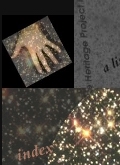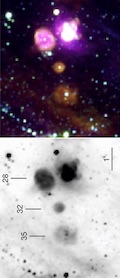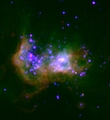



The Stellar Content of Superbubble H II Regions in the Large Magellanic Cloud
M.S. OeyI examine the stellar population enclosed within a sample of 6 LMC superbubbles and compare these clusters with previously studied OB associations in classical H II regions. The H-R diagrams, constructed with spectral classifications of the most massive stars, do not reveal any systematic differences between OB associations resident within superbubbles and classical nebulae. The main-sequence turnoffs show stars as massive and luminous as those in classical H II regions, implying that the shell formation timescale is somewhat shorter than the cluster evolutionary timescale. The stellar winds and/or supernovae of the one or two most massive stars must therefore dominate the formation of the superbubbles. The star-forming events for the superbubble associations are also no more extended in duration than that of other OB associations. Finally, the IMF slopes are not systematically different from those previously found. Since the OB associations within superbubbles appear normal, the shell structures must be the result of normal OB stellar influences. I also present a few spectrograms of interesting massive stars, including S149, a probable new B[e] supergiant. 1996 ApJ, 465, 231
|

